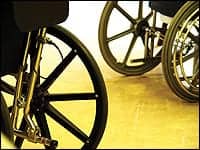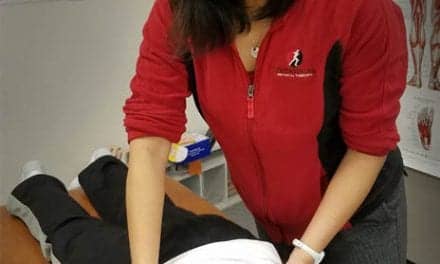The senior author of a study examining the direct medical costs of falls in adults with transfemoral amputations suggests that deeming only high-functioning patients eligible for a microprocessor-controlled prosthetic may not make economic sense.
“This study quantifies the cost of falls that require medical attention—providing evidence that it may not be economical to withhold microprocessor knees from patients with moderate ambulatory capabilities,” says senior author Kenton Kaufman, a biomedical engineer and orthopedics researcher at Mayo Clinic, in a media release.
The study was published recently in Prosthetics and Orthotics International.
Current policies that govern insurance payments grant basic mechanical knees for most amputees. Despite growing data that newer technology reduces falls and improves physical capabilities, only high-functioning patients (based on mobility and activity levels) are deemed eligible for a knee with microprocessor technology, the release, from Mayo Clinic, explains.
“We want to help provide the best quality of life and prosthesis for each individual,” states Benjamin Mundell, PhD, the study’s lead author. It is important to look beyond the initial cost differences of a microprocessor knee compared to a mechanical knee and understand what downstream costs might be avoided with a better prosthesis.”
“Microprocessor knees are designed to help improve balance and reduce falls,” adds Mundell, a health economist who is currently a medical student at Mayo Clinic School of Medicine, in the release. “The fear of falling for those with mechanical knees likely reduces their overall physical activity. If they do fall and require hospitalization, the cost of care is almost as expensive as a microprocessor knee.”
In their study, the researchers used the Rochester Epidemiology Project, a health records linkage collaboration in Minnesota and Wisconsin, to examine the records of 77 individuals who received a transfemoral amputation between 2000 and 2014. They found that 46 of these patients had received a prosthetic knee. Of these, 22 individuals experienced 31 falls that resulted in an emergency department visit or hospitalization. If they fell more than once during an 18-month period, both incidents were excluded from the cost analysis to prevent misalignment of costs.
Using standardized Medicare cost data from the Rochester Epidemiology Project’s new Cost Data Warehouse, the researchers found that the average additional cost in the 6 months following a fall can be substantial. The additional fall cost for individuals requiring an emergency department visit was $18,000. For patients who had to be hospitalized, this extra expense was more than $25,000, the release explains.
Kaufman states in the release that he believes that the costs to patients are much higher than the study indicates.
“We know our cost estimate underestimates the true cost of a fall, because we didn’t include indirect costs, such as lost wages, caregiving expenses, and transportation costs,” he says.
Medicare Functional Classification Levels, also known as K levels, are used to determine which prosthetic device is medically necessary for a patient, per the release.
“For many, the default may be a mechanical knee, because it is easier to prove basic necessity than to ensure the rigorous documentation requirements for one with advanced—and more costly—technology,” Kaufman adds, regarding these classification levels.
“One of the reasons we work on improving technology in prosthetic knees is to help individuals become more agile, more balanced and less likely to fall. But if people aren’t able to access this technology, they may become more vulnerable and less active than their condition would normally indicate.”
“We hope that our research increases understanding of the cost-benefit equation from the patient’s perspective,” Kaufman concludes. “Greater mobility gives people more freedom to live healthier lives.”
[Source(s): Mayo Clinic, Science Daily]





